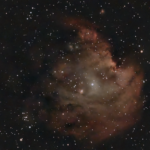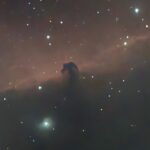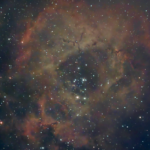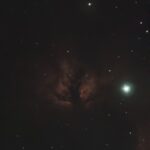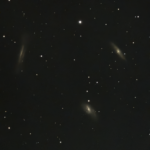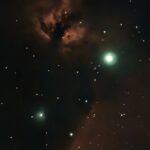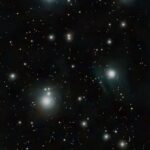Monkey Head Nebula (NGC 2174) is roughly 6400 light years from Earth. Taken with SeeStar S50. Bortle 7 in Broken Arrow, OK. January 10. 2024
This is an image of a trio of galaxies in the constellation Leo called the Leo Triplet. The galaxies are roughly 35 million light years away. This is actually two images stitched together. The first image was of the two on the right and the second was the one on the left. The two on the right are 160,000 light years apart and they are 300,000 light years from the one on the left. Taken with SeeStar S50
This is the Horsehead and Flame Nebula complex. The bright star is Alnitak, the left star of the three in Orion’s belt. This is one image of the complex. Orion rose far enough in the sky that I could get it all in one shot unlike the pic on one of the following pages where I did a mosaic of four images.
